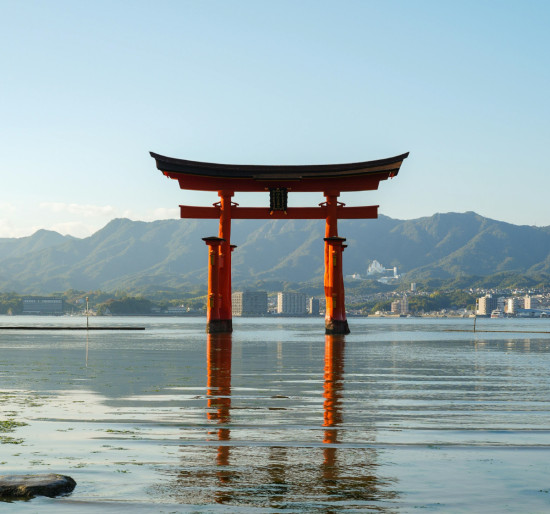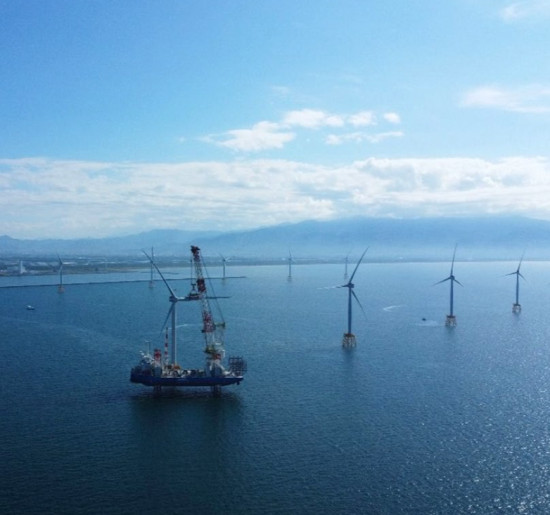Marex eyes opportunities in Japan's offshore wind sector
17th February 2025As Japan sets its sights on becoming a carbon-neutral society by 2050, the country's ambitious offshore wind power targets present a significant opportunity for companies like Marex.

This week, our managing director Wayne Henderson is heading to Wind Expo Japan in Tokyo. This three-day event hosts over 1,600 exhibitors discussing a wide range of technologies for wind power generation, including wind turbines to wind farm construction, maintenance and operation, as well as offshore wind technologies.
Cultural elements play a key factor in doing business in Japan. Values underpin communication, decision-making and business etiquette, as well as behaviouer during meetings.
Fortunately Wayne is travelling back to a country he is very familiar with, having lived and work there for more than three years.
“I know from experience that Japan holds very high expectations for quality, precision and innovation – and that is the alignment with Marex,” he said.
“As Marex’s continued energy transition opens up more global opportunities, Japan is the perfect opportunity to use our acknowledged expertise and experience to support them with their ambitions.”

Rising opportunities
Japan has declared its intention to achieve a carbon neutral society by 2050. The key focus areas for them are renewable energy, hydrogen, carbon capture and electrification across sectors.
Offshore wind is a key driver for Japan’s expansion of renewable energy and its national strategic energy plan sets out a target of 6% wind power in the energy mix by 2030.
Despite ambitious targets, Japan faces significant challenges. In 2022, coal still generated 28% of the nation's power, while wind accounted for less than 1%.
The government wants to enhance the competitiveness of its own offshore wind industry as it strives to generate 10GW by 2030. That target rises to between 30-45GW by 2040.
Japan has the sixth largest exclusive economic zone (EEZ) in the world by area and unlocking this to offshore wind is seen as key to meeting Japan’s targets
Offshore wind power is thought to have a potential of approximately 1,000GW, including territorial waters and exclusive economic zones (EEZ), which is more than three times its installed power generation capacity (approximately 320GW).
As an industrial target the government wants to build a strong supply chain for offshore wind and drive down costs and they want Japanese local content to increase to 60% by that date.
However, there are concerns around domestic availability of the requisite specialist skills and knowledge. Challenges also surround both infrastructure and logistics, including existing port facilities, grid connection and transmission as well as sufficient support to develop the supply chain within the country.
Tokyo Big Sight
“Wind Expo Japan provides a valuable opportunity for Marex to connect with key wind farm developers and trading companies active in the region,” said Wayne.
“We can bring our expertise and knowledge to bear from our work in other regions around the world, so I’m very much looking forward to having some very interesting conversations.
“I am very much looking forward to revisiting a business culture that is fundamentally about building and maintaining relationships, not to mention the food.
“Gyoza from Utsunomiya remain vivid in my memory, the casual atmosphere in a Tonkatsu restaurant, the freshness of sashimi and sushi and the quality of beef at a teppanyaki restaurant. With the Japanese focus on quality you can also find some of the best foreign cuisine in Japan.”
- Wind Expo Japan runs from Wednesday through to Friday (19-21 Feb) at Tokyo Big Sight and is co-organised by Japan Wind Power Association (JWPA) and supported by Japan Wind Energy Association
Marex will be part of the Scotland Pavilion (*9 E23-22) which is supported by Scottish Development International and Scottish Enterprise.
Also at the pavilion are Acteon Group Operation (UK); Balmoral Comtec; Coast Offshore; First Marine Solutions (FMS); Maritime Developments; Sulmara Subsea International; W3G Marine and Wood Mackenzie.









